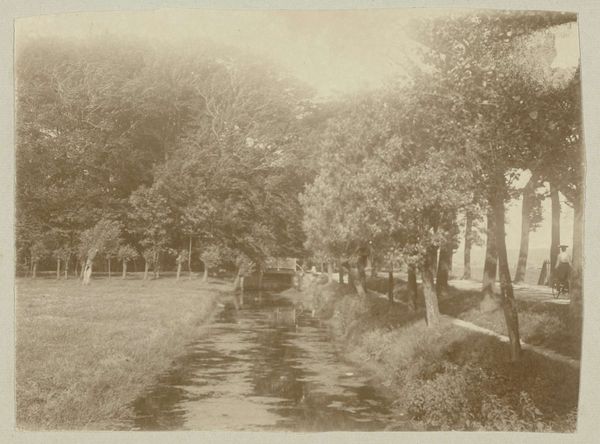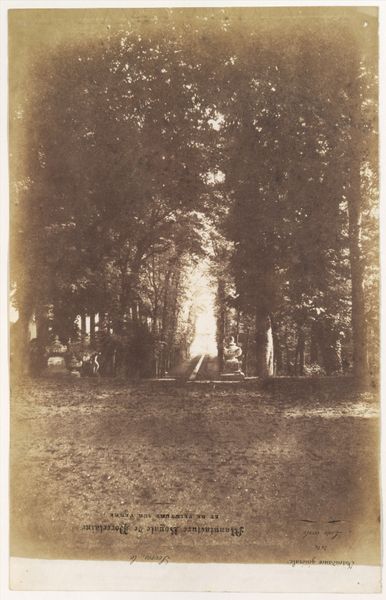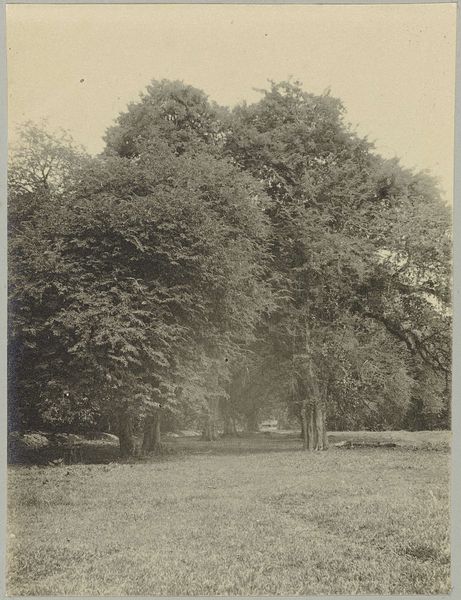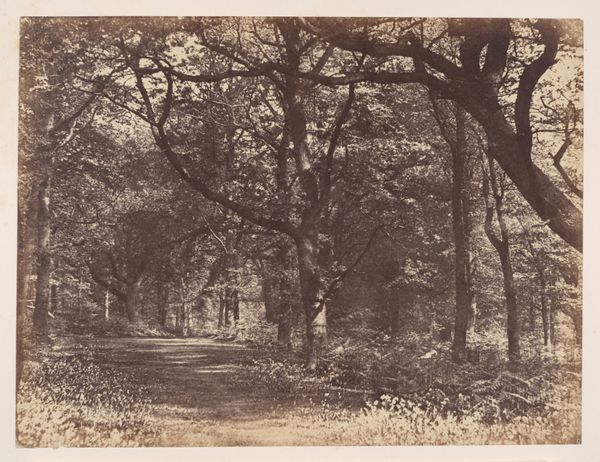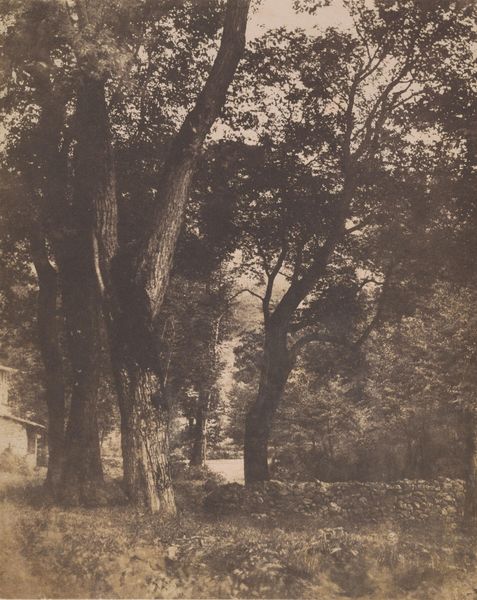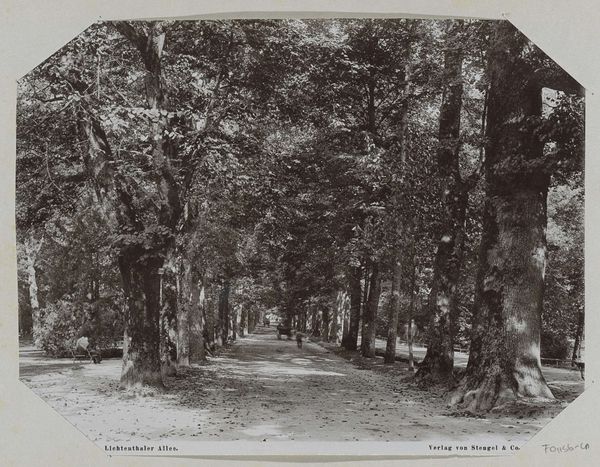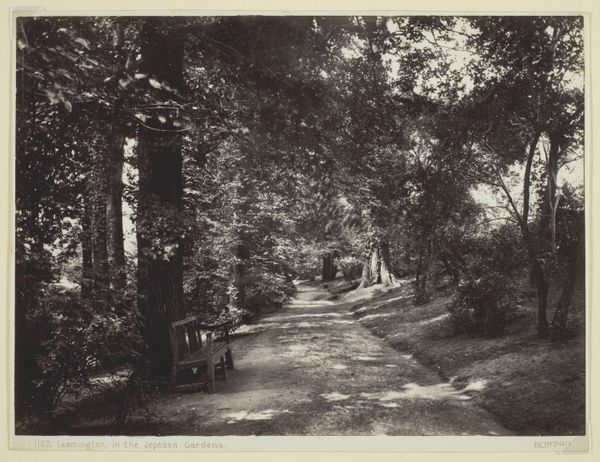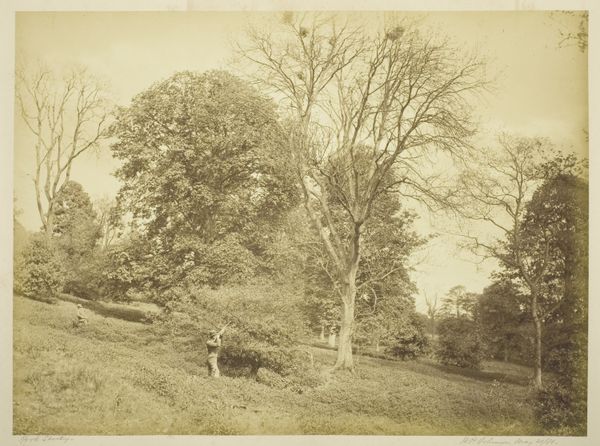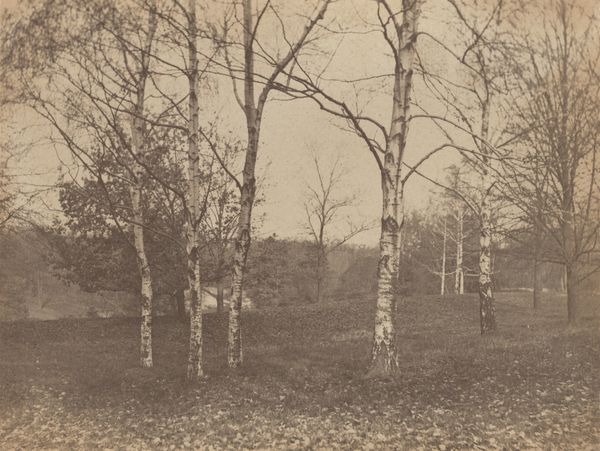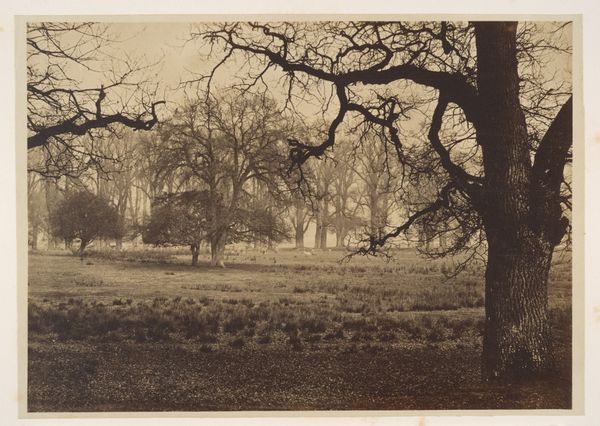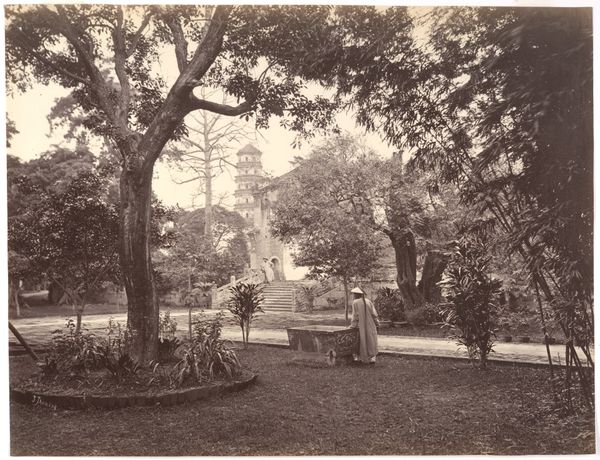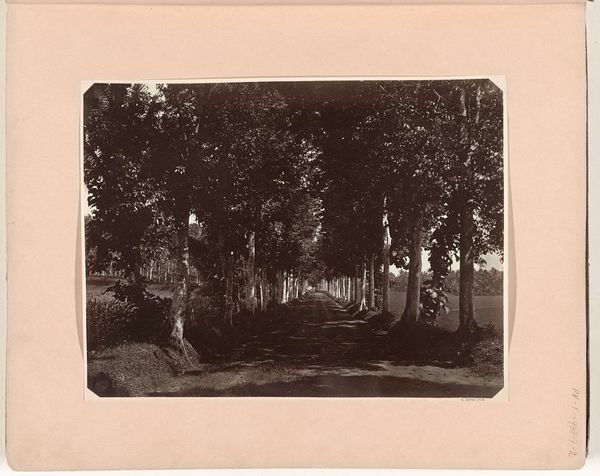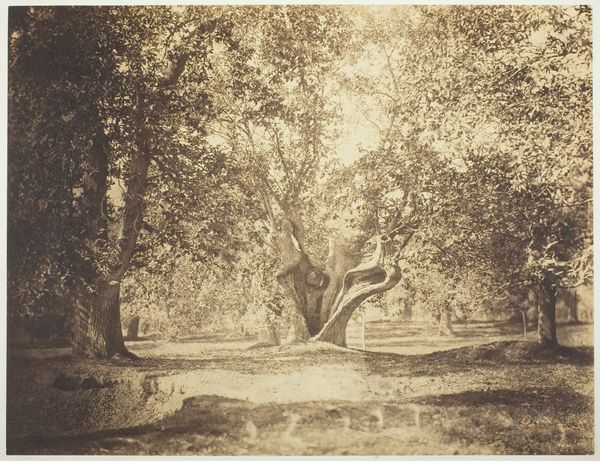
Dimensions: Mount: 21 9/16 in. × 27 3/8 in. (54.8 × 69.6 cm) Image: 12 3/8 × 14 13/16 in. (31.5 × 37.7 cm)
Copyright: Public Domain
Editor: So this gelatin-silver print, "Hollow Oak Tree, Fontainebleau" by Gustave Le Gray, dating from sometime between 1855 and 1857, feels so…still. The textures are amazing, but there's almost a sadness about it. What jumps out at you when you look at this image? Curator: You know, it *does* have that quietude, doesn’t it? Like a secret whispered from a time long gone. Le Gray was such a master of light, wasn't he? It’s not just the textures but the feeling of light filtering through those ancient branches. It’s like looking into the very heart of the forest, the way it feels to be lost in thought beneath the trees. Have you ever been to Fontainebleau forest? Editor: I haven't, actually. Curator: It was quite the hot spot in the mid-19th century, a kind of artistic mecca! Artists like Corot and Rousseau, part of the Barbizon school, were drawn there, wanting to paint directly from nature. It was a shift from the grand, idealized landscapes of the past. I see this photograph as part of that same movement— a search for truth, for authenticity in nature. Though he did go back to his studio and refine them. This adds a touch of theatricality and depth. Don't you think the composition, almost like a stage, contributes to the Romantic feel? Editor: That's so interesting. I hadn’t considered the staged aspect; I was focusing on the realism, which I guess highlights how it’s both Romantic and Realist. Thanks for expanding my perspective! Curator: And thank *you* for noticing the sadness in it. Maybe that's Le Gray's own story echoing in the image. These things, they often work on us subconsciously, don’t they? There is such a timelessness and depth in his work, isn't there?
Comments
No comments
Be the first to comment and join the conversation on the ultimate creative platform.
